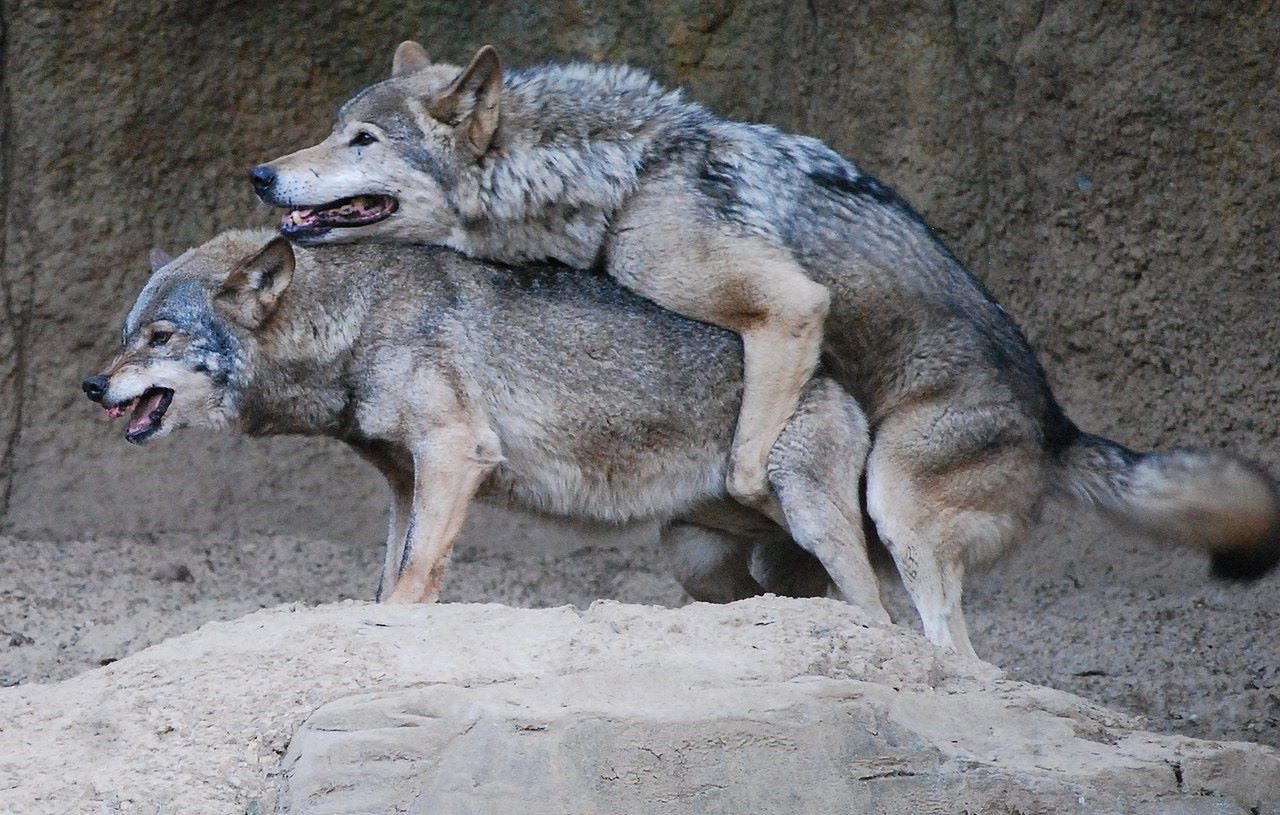
Ever wondered how wolves find their mates and what happens next? Wolves are fascinating creatures with complex social structures, and their mating habits are no exception. From lifelong bonds to intricate courtship rituals, these majestic animals have unique ways of ensuring the survival of their packs. In this post, we'll delve into 16 intriguing facts about wolf mating that will give you a deeper understanding of their world. Whether you're a wildlife enthusiast or just curious about these incredible animals, you'll find something to pique your interest. Ready to learn more about the love lives of wolves? Let's get started!
Key Takeaways:
- Wolves are loyal mates, mating between January and March to ensure favorable conditions for their pups. Their complex social structure and communication are crucial for their survival.
- Conservation efforts are vital for protecting wolf habitats and ensuring their ability to find mates and establish territories. This helps maintain the balance of their ecosystems.
Wolf Mating Rituals
Wolves have fascinating mating rituals that ensure the strength and survival of their pack. These behaviors are not only intriguing but also vital for maintaining the social structure of the pack.
-
Wolves are monogamous: Wolves usually form lifelong bonds with their mates. This loyalty helps maintain stability within the pack.
-
Mating season: Wolves typically mate between January and March. This timing ensures that pups are born in the spring when conditions are more favorable.
-
Courtship behaviors: Before mating, wolves engage in various courtship behaviors such as nuzzling, licking, and playful chasing. These actions strengthen their bond.
Wolf Pack Dynamics
The social structure of a wolf pack plays a crucial role in their mating habits. Understanding these dynamics provides insight into their complex relationships.
-
Alpha pair: The alpha male and female are usually the only ones to mate within a pack. This hierarchy prevents overpopulation and ensures the strongest genes are passed on.
-
Subordinate wolves: Lower-ranking wolves often help care for the alpha pair's pups. This cooperative behavior strengthens the pack's unity.
-
Dispersal: Some wolves leave their birth pack to find a mate and start their own pack. This dispersal helps prevent inbreeding and promotes genetic diversity.
Wolf Reproduction
Reproduction in wolves involves several stages, from mating to raising pups. Each stage is crucial for the survival of the species.
-
Gestation period: The gestation period for wolves is about 63 days. During this time, the pregnant female prepares a den for her upcoming litter.
-
Litter size: A typical wolf litter consists of 4 to 6 pups. Larger litters can occur but are less common.
-
Pup development: Wolf pups are born blind and deaf. They rely entirely on their mother for the first few weeks of life.
Parental Care
Wolves are known for their strong parental instincts. Both parents, along with other pack members, play a role in raising the pups.
-
Nursing: The mother nurses her pups for about 5 to 10 weeks. During this time, she rarely leaves the den.
-
Regurgitation: Adult wolves regurgitate food for the pups once they begin to wean. This behavior helps transition the pups to solid food.
-
Teaching: Adult wolves teach the pups essential survival skills, such as hunting and social behaviors. This education is crucial for the pups' future success.
Wolf Communication
Communication is vital for maintaining relationships within the pack, especially during the mating season.
-
Howling: Wolves use howling to communicate with their pack members. This vocalization helps maintain pack cohesion and can signal mating readiness.
-
Scent marking: Wolves mark their territory with scent to communicate their presence and reproductive status. This behavior helps prevent conflicts with other packs.
-
Body language: Wolves use body language, such as tail position and facial expressions, to convey their intentions and emotions. These non-verbal cues are essential for maintaining harmony within the pack.
Challenges and Conservation
Wolves face numerous challenges that can impact their mating and reproduction. Conservation efforts are crucial for their survival.
Wolves and Their Mating Mysteries
Wolves have some fascinating mating habits. They form monogamous pairs, often staying together for life. This loyalty helps them raise their pups successfully. Alpha pairs lead the pack, ensuring the group's survival. Mating season usually happens in late winter, with pups born in spring. These young wolves rely on the entire pack for care and protection.
Communication plays a big role in their relationships. Howls, body language, and scent marking keep the pack connected. Wolves also show affection through grooming and playful behavior. Their strong social bonds make them effective hunters and protectors.
Understanding these behaviors gives us a glimpse into the complex world of wolves. Their dedication to family and pack is truly inspiring. Next time you hear a wolf howl, remember the intricate social structure and loyalty behind that sound. Wolves are more than just wild animals; they're a testament to the power of unity and cooperation.
Frequently Asked Questions
Was this page helpful?
Our commitment to delivering trustworthy and engaging content is at the heart of what we do. Each fact on our site is contributed by real users like you, bringing a wealth of diverse insights and information. To ensure the highest standards of accuracy and reliability, our dedicated editors meticulously review each submission. This process guarantees that the facts we share are not only fascinating but also credible. Trust in our commitment to quality and authenticity as you explore and learn with us.
